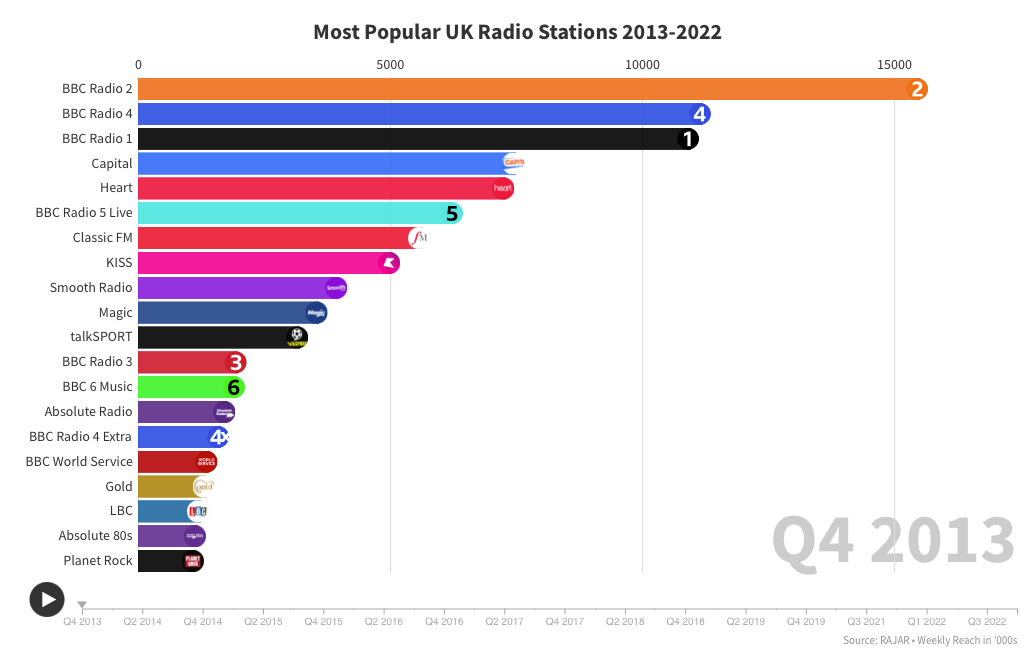The publication of Q4 2022’s RAJAR results a couple of weeks ago, expertly analysed (as always) by Adam Bowie and Matt Deegan, but devoid of any big surprises, prompted me to take a step back and look at the last decade of results.
One of the most striking things is just how well total radio listening has held up in a period of dramatic change for audio; the explosion in music streaming, steady growth in podcast listening, plus the habit-changing tsunami of the pandemic.
In the final quarter of 2013, 48.4 million people (91% of the adult population) listened to 1.03 billion hours of radio each week. In the final quarter of 2022, 49.7 million people (89% of the adult population) listened to 1.01 billion hours each week.
Yes, younger audiences are listening to less radio than previous generations and that merits attention, but it’s worth not losing sight of that 1 billion hours figure. It’s a big number, which is holding up surprisingly well.
To get a picture of station-level trends, I charted the top 20 most popular stations by reach over the last 10 years using the excellent data visualisation tool, Flourish.
Click/tap on the below image to view an animation of how that top 20 has changed over the past decade.
Things that struck me watching this a couple of times through:
How stable the top ten has been, with just one new entrant in ten years (take a bow, Greatest Hits Radio).
LBC’s reach doubling (from 1.2m to 2.5m) since it went nationwide in 2014.
Ditto Radio X (ne. XFM) which has gone from 900k to 2m weekly listeners since it went nationwide in 2015.
BBC 6 Music’s steady growth (up 27% from 2m in 2013 to 2.5m in 2022). Hard to believe it was briefly earmarked for closure in 2010.
The extent to which KISSTORY (up 147% from 930k to 2.3m) has cannibalised its parent station, KISS (whose reach has halved from 5m to 2.4m) as its audience has aged; a good example of disrupting yourself to avoid leaving a vacuum for your competitors to fill.
How well Absolute 80s (up 29% from 1.2m to 1.5m) has held up since the launch of Heart 80s in 2017 (which bounces around just below Absolute 80s with a weekly reach of around 1.3m).
I also created a weekly listening hours variant:
Notable:
Just how far ahead of the pack BBC Radio 2 and BBC Radio 4 in terms of time spent (they typically account for as much listening as the next eight stations combined).
The extent of the decline in time spent with BBC Radio 1 (down by a third from 71m hours to 48m hours).
That Classic FM listeners are listening more (hours are up 10%) but that there are fewer of them (reach is down 12%, although you would guess it from this carefully-worded press release).
Interested in other trends more seasoned radio analysts would pull out of this view of the data.
Data caveat: All RAJAR listening figures from Q3 2021 onwards have been calculated using a modified survey methodology and this should be considered when making comparisons against historical data.






I sense a new tagline coming on - “BBC Radio 2 - the x-axis of British radio”.